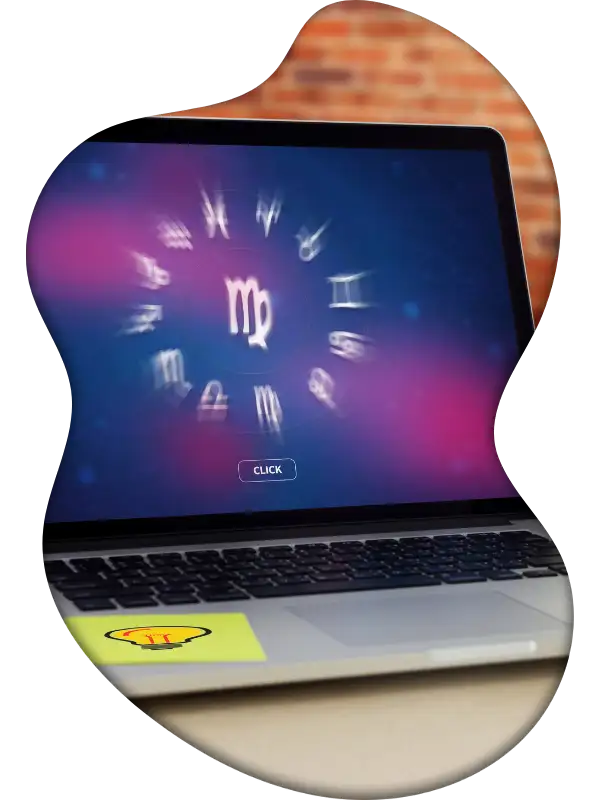As the Sun moves along the zodiac circle, it also passes through certain constellations in the celestial sphere, as shown in the diagram below.
There is a common mistake — confusing zodiac signs and constellations due to their identical names. Constellations are groups of fixed stars. Constellations have unequal lengths, and their boundaries have been redefined in different historical epochs. A zodiac sign is a 30-degree arc of the ecliptic circle, not related to constellations except for their names. Moreover, zodiac signs slowly shift against the backdrop of fixed stars and constellations. We will explain why constellations and zodiac signs have the same names later.
[toc]
Precession
If you have yet to hear of precession, the best way to understand it is to imagine a spinning top. When you spin a top, you rarely manage to make its axis of rotation perfectly perpendicular to the ground. It will still be slightly tilted, and as a result, you will notice that while the top spins rapidly around its axis, the axis itself makes smooth circular motions around the axis perpendicular to the ground. This effect is called precession. The same effect happens with the Earth. It is called the precession of the Earth’s axis.
The Earth’s axis makes one big precession cycle in about 26,000 years or about 9 million rotations of the Earth around its axis. Ancient Greeks made the first calculation of the precession period with very high accuracy. Look at the following diagram.
Due to precession, the Earth’s axis changes its orientation. If the Earth’s axis is currently pointing to the right and position 1 is the point of the vernal equinox, then after a quarter of a great cycle (in 26,000 years), the Earth’s axis will be pointing towards you — the Earth will be facing you with its North Pole. At the same time, to be evenly illuminated both in the south and in the north (so that day equals night), the Earth needs to be in position 1’. In other words, due to the precession of the Earth’s axis, the point of the vernal equinox has shifted from position 1 to position 1’.
If every year on the day of the vernal equinox, we observe the position of the Sun, decades later, we will notice the prolonged shift of this position against the background of fixed stars. Hence, the point of the vernal equinox shifts against the backdrop of fixed stars. And since the entire zodiac circle is tied to the point of the vernal equinox, it turns out that all 12 signs slowly shift against the backdrop of constellations, completing one full rotation in 26,000 years. You can look at it differently: constellations change against the backdrop of the zodiac circle.
Tropical and Sidereal Zodiac Circles
The 12 zodiac signs we’ve discussed, tied to the vernal equinox point, represent the tropical, or movable, zodiac circle. As we’ve just understood, this zodiac circle is not stationary — it slowly shifts against the backdrop of the fixed stars.
If, at a particular moment, we fix the position of the tropical zodiac circle against the backdrop of the fixed stars, such a “fixed” zodiac circle would be called the sidereal, or starry, zodiac. It will no longer be associated with the “walking” point of the vernal equinox but with the fixed stars. It will be firmly “attached” to the stars and constellations. However, even in this case, the signs of the sidereal zodiac circle will not coincide with the constellations — constellations have different extents and represent groups of stars called constellations by convention. A sign of the sidereal zodiac is a 30-degree arc of the ecliptic circle, firmly “anchored” against the background of the stars.
It is clear that when the tropical zodiac circle shifts against the backdrop of the fixed stars, it also shifts against the background of the sidereal zodiac circle. In other words, the sidereal zodiac shifts relative to the tropical zodiac. The sidereal and tropical zodiac circles coincided about two millennia ago.
Is There a 13th Zodiac Sign?
Many media outlets talk about this zodiac sign. However, in reality, such a sign does not exist. There is a 13th constellation that crosses the zodiac circle, but this has nothing to do with a 13th sign. A sign, by definition, spans 30 degrees along the ecliptic. Therefore, only 12 signs can fit in a full circle of 360 degrees. It is true for both tropical and sidereal zodiac circles.
Great Cycles and Ages
The sidereal zodiac circle slowly shifts against the tropical one. Once every two thousand years or so, a new sign of the sidereal circle crosses the zero degrees of Aries of the tropical circle — this marks the beginning of a new astrological age, which lasts slightly over two millennia until the point of the vernal equinox enters a new sign of the sidereal zodiac circle. The sidereal and tropical zodiac circles coincided about two thousand years ago (during the Hellenistic astrology era). Nowadays, the Age of Pisces is ending, giving way to the Age of Aquarius.
The ancients were well aware of the changing epochs. The sign of Pisces symbolized the Christian era. Now, it is fading, giving way to the era of Aquarius, associated with the power of logic.


